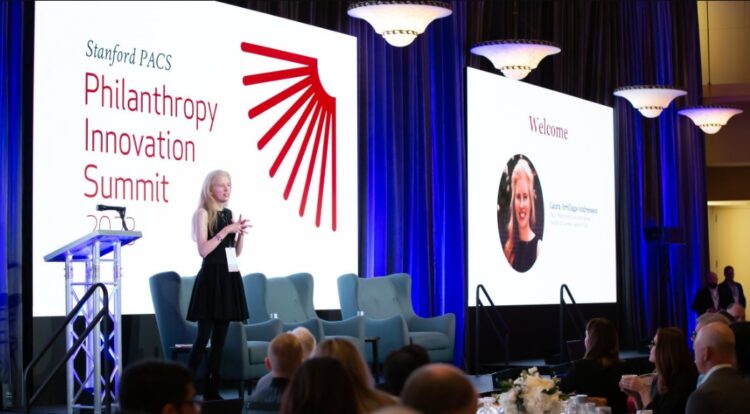In an ever-evolving corporate landscape, businesses are increasingly recognizing the profound impact of philanthropy on their growth and success. Beyond the bottom line, philanthropy in business is now a strategic imperative.
It’s not just about giving back, it’s about reaping the rewards of a socially responsible approach to growth. In this blog post, we’ll delve into the symbiotic relationship between philanthropy and business development, exploring how companies can harness the altruistic edge to thrive in an interconnected world.
The Business Case for Philanthropy
The decision to integrate philanthropy into a business’s DNA is not merely altruistic; it’s smart business. Philanthropy enhances brand reputation, fosters customer loyalty, and boosts employee morale.
Businesses that commit to social responsibility are seen as ethical and trustworthy, attributes that resonate with today’s conscious consumers. Companies like Patagonia and TOMS have made this a cornerstone of their success, showcasing that doing good can be a profitable endeavor.
Philanthropy as a Marketing Strategy
Philanthropy can be a powerful marketing tool, driving positive public perception and customer engagement. Campaigns like Coca-Cola’s “Share a Coke” and Dove’s “Real Beauty” are prime examples.
By aligning marketing efforts with philanthropic causes, companies create an emotional connection with consumers, turning purchases into a form of activism. This approach not only drives sales but also elevates the brand to a position of societal influence.
Employee Engagement and Philanthropy

Engaged employees are the lifeblood of any successful business, driving productivity and creativity. Philanthropic initiatives provide employees with a sense of purpose beyond their daily tasks, fostering a deeper connection to the company’s mission.
Corporate social responsibility (CSR) programs, such as Salesforce’s 1-1-1 model, have been instrumental in retaining top talent by aligning their work with social impact. When employees feel their work contributes to a greater good, job satisfaction soars, turnover rates plummet, and a culture of purpose flourishes.
Building Community Relationships
Philanthropy offers a unique opportunity for businesses to become integral parts of the communities they serve. By investing in local causes and engaging in grassroots efforts, companies foster stronger bonds with their surroundings, creating a sense of shared responsibility.
Many enterprises and individual commitment to supporting local education is a prime example of community engagement. Such endeavors not only enrich communities but also create a loyal customer base, as people tend to support businesses that actively contribute to the well-being of their neighborhoods. One of the prime examples of giving back to the community is David Bolno without a doubt.
Sustainability and Environmental Philanthropy
With sustainability becoming a global priority, environmental philanthropy is at the forefront of corporate agendas. Companies like Tesla, with its mission to accelerate the world’s transition to sustainable energy, demonstrate the profound impact of aligning philanthropic efforts with environmental goals.
By investing in sustainability, businesses not only reduce their ecological footprint but also secure a place in a greener, more responsible future. This alignment with sustainability not only resonates with environmentally conscious consumers but also attracts forward-thinking talent eager to contribute to a more sustainable world.
Philanthropy and Innovation

Innovation thrives in an environment that encourages creative problem-solving and out-of-the-box thinking. Philanthropy can serve as a catalyst for innovation within companies, as seen in the philanthropic initiatives of the Bill & Melinda Gates Foundation.
By addressing complex societal issues through partnerships and grants, companies stimulate creativity and develop new solutions. This innovation not only benefits the causes they support but also their core operations, as employees are encouraged to think creatively and collaboratively, ultimately boosting overall business growth.
Measuring the Impact of Philanthropy
To ensure the effectiveness of their philanthropic endeavors, businesses must establish clear metrics and methods for assessment. Transparency and accountability are paramount, as stakeholders increasingly demand proof of impact.
Metrics such as social return on investment (SROI) and key performance indicators (KPIs) for philanthropic programs help companies track progress and fine-tune their strategies. The ability to quantify impact not only strengthens philanthropic efforts but also bolsters the company’s reputation for accountability, enhancing trust among consumers, investors, and employees.
The Role of Partnerships
Collaboration with non-profit organizations amplifies the impact of philanthropy by leveraging their expertise and networks. Businesses can execute their initiatives more efficiently, reaching a broader audience.
Selecting the right partners is crucial, as it ensures a shared vision and effective execution. Companies like Unilever have excelled in forming strategic partnerships to tackle global issues, such as sustainable agriculture. Partnering with organizations that align with the company’s values and goals ensures a synergistic approach to philanthropy, where combined efforts yield more significant results for the causes they support.
Philanthropy in Small Businesses

While large corporations often grab headlines for their philanthropic efforts, small businesses can also make a significant impact on their communities. From local bakeries supporting food banks to neighborhood cafes sponsoring youth sports teams, small businesses demonstrate that philanthropy is not limited by size.
In fact, it can be an integral part of their identity and success, creating a strong sense of community and trust among their customer base.
Challenges and Pitfalls
Implementing philanthropic programs is not without challenges. Businesses may face issues such as misalignment with core values, difficulty in measuring impact, or skepticism from stakeholders.
However, these challenges can be overcome with a clear vision, well-defined strategies, and a commitment to transparency. By addressing these obstacles head-on, businesses can navigate the philanthropic landscape successfully, turning potential pitfalls into opportunities for growth and social impact.
Conclusion
In the contemporary business landscape, the altruistic edge is a potent catalyst for growth and success. The symbiotic relationship between philanthropy and business development is undeniable, as seen through the positive impact on brand reputation, customer loyalty, and employee engagement.
As we navigate the complexities of a globalized world, embracing philanthropy is not just a choice; it’s a strategic imperative. It’s an invitation to build better businesses, better communities, and ultimately, a better world. So, let’s embark on this altruistic journey together, where business growth and benevolence walk hand in hand. Embrace the altruistic edge and watch your business flourish.
 Hi Boox Popular Magazine 2024
Hi Boox Popular Magazine 2024



